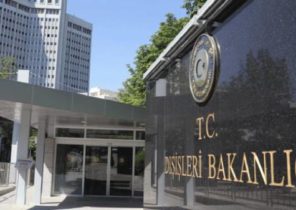That’s because these news the Second world war and shrouded in the same mysteries that fascinate as experienced professionals and newcomers alike. In 2015 there is information that was discovered evidence of the existence in Wałbrzych trains loaded with Nazi gold. Five years later, thanks to the diary of an SS officer, you may be able to learn the whereabouts of 28 tons of gold hidden by Heinrich Himmler (Heinrich Himmler) in 1945. This story is reminiscent of the film Indiana Jones. However, according to an article published on the website of the Polish newspaper TFN, all this, and the German attack on France occurred in real life.
According to the newspaper TFN, the Fund Schlesische brücke received the diary in 2019 and found out that the treasure is hidden in the Palace owned by the princely family the Hochberg and located near the city of Wroclaw in southern Poland. The Fund representatives even dared to tell the various English-language publications that a cache of art seized by the Nazis from the local Jewish families were hidden in the well, which soon blew the Waffen-SS.
More specifically, the diary is a clue to the location of the treasure map, which supposedly indicated the cave of Ali Baba in the above mentioned region of Lower Silesia. When the Soviet army advanced towards Berlin, it is from this region, the Nazis took out the treasure and hundreds of works of art. In addition, the diary lists ten more caches, in which the Germans under the leadership of Heinrich Himmler hid the jewels, priceless paintings and religious objects stolen in Poland. At the moment their whereabouts were not disclosed.
The discussion began. For five years of searching and failed to find the “gold train”. The question arises: are news — whether they are a figment of someone’s wild imagination? Or indeed there is a likelihood that there would be caches of works of art? According to historian and author of the book “Nazi plunder” (El expolio nazi) Miguel Martorell, we should not be too trusting.
“In 1942, the Nazis hid works of art and values in castles and salt mines, to the bombing they were not destroyed. Before the arrival of the red Army, Himmler could do the same. It seems quite plausible. However, this remains to be proven,” explained the historian in an interview with ABC.
Miguel Martorell admits that someone may accidentally find the lost treasure of world war II. “At the bottom of the oceans are ships filled with treasure. So anything is possible,” — said the historian. He’s not very happy that year after year there are treasure maps, which were just forgotten. According to experts, the main thing — to distinguish reliable facts from assumptions, however persuasive these assumptions may seem. Even despite the fact that over the last decade, constantly there is information about the fact that since 1944, Nazis everywhere was hiding the stolen wealth in the mines, Miguel Martorell inclined to believe that’s just speculation, though, and for them is a mystery.
New treasure
The history of this treasure, allegedly hidden by the Nazis, began 75 years ago, when the Soviet offensive, the Germans hastily left Poland. Then, according to legend, Heinrich Himmler began to take cultural heritage values that the Nazis took from the local Jews. It was works of art from private collections and museums, money and gold. However, due to the rapid advance of the red Army, the Nazis were forced to hide many of the values. This was done in the hope to pick them up after the Nazis will return to these areas.
For example, here is what the scheme was put forward by the archaeologist and journalist Joanne Lamparska (Joanna Lamparska). “Before 1945, lower Silesia was under the control of the Germans. They did not think that can lose it. When I realized that the retreat there is little time left, they hid the fact that are unable to pick up, hoping that she’ll be back”. In 2015, it became known that responsible for the stolen treasure falling into the hands of the enemy, was appointed Director of the “Institute for the study and eradication of Jewish influence on German Church life” and the Keeper of the region’s heritage, the SS officer Gunther Grundmann (Günther Grundmann).
Günter Grundmann engaged in the inventory of German art in 1942, and organized hiding places in castles, to the bombardment they were not destroyed. Probably an SS officer understood that he will not take all the wealth, and chose about 74 places to hide the treasures. One such hiding place, perhaps, is in the Palace of the princely family Höchberg in Rostock. According to the article TFN, another representative of the Waffen SS, a Michaelis, supposedly chose the well in the Palace and hid in it 28 tons of gold and many other valuables, blew it, and recorded in the diary, the location of this cache.
In an interview with a Polish newspaper, Director of the Foundation Schlesische brücke Roman Formanek (Roman Furmaniak) said that this diary and many other documents they gave the descendants of the SS, who live in the German state Saxony-Anhalt. The Fund Manager also said that among these documents there is a map with eleven recesses, where possible, Michaelis, and hid dozens of works of art, religious objects, gold of the Reichsbank, and even a lost painting by Raphael.
According to the Roman Formanek, the diary gave the descendants of SS officers
In addition, according to Roman Formanek at least three independent organizations have recognized that the diary was written during the Second world war. However, this information is not confirmed by the official representative of the Ministry of culture and national heritage of the Republic of Poland Magdalena Tomashevskaya (Magdalena Tomaszewska). Meanwhile, the news that the Palace of the princely family the Hochberg can be hidden tons of gold, attracted the attention of the world. Everyone wants to find a hiding place that were given permission to conduct excavations in the gardens. The territory of the Palace is under the private guard to the treasure hunters couldn’t get there.
Old bad habits
According to experts, in the Palace of the princely family Höchberg is one of the legendary caches of treasure that are trying to find after the Second world war. Now 75 years, treasure hunters looking for these mysterious treasures, such as gold in the Pacific that General Yamashita stole from allies, or the already mentioned “gold train” of the Nazis in the mountains of Poland. The question arises whether after all these years, could remain untouched recesses of the countries of the axis during the war.
Miguel Martorell does not deny this possibility, however, to information in the diary is skeptical. In an interview with ABC historian stressed that in the process of learning it is important to distinguish historical fact from assumptions. “Indeed, in 1942, when he began the bombardment of the allies, the Nazis inventoried the art works in their localities. Really for safety they hid many paintings and works of art in castles and salt mines. However, the French were hiding valuables in the castles of the Loire, and the British took everything from the British Museum, when the German Luftwaffe bombed London,” says the historian.
It is unknown, however, quite significantly, whether there was an order by Himmler to hide works of art before the arrival of Soviet troops. “The Soviet army reached the Nazis controlled the territory for the year, so this assumption is justified, but it is yet to be confirmed,” — said Miguel Martorell. According to the historian, it is quite plausible, though not proven, that the German citizens in Poland to hide valuables at home or Waffen-SS used mine, built by the Third Reich, as hiding places. “Is it possible? Of course. However, it is still necessary to prove. The big difference is that there is evidence or not”, — the expert concludes.
According to the historian, there are several reasons why this possibility might become an indisputable fact. One of them is that it is unknown the number of art works that the Nazis stole in the USSR on the territory of other countries. “In Eastern Europe, they pillaged and wantonly destroyed everything in their path, in contrast to Western Europe. Despite the defeat, the Germans considered the Luxembourgers or the French themselves equal. So they did not touch private collections or churches, robbed only of the Jews. In Russia, they took everything they wanted, because they thought that the Slavs are an inferior race that does not have any rights to the art,” said the historian.
“The difference between a guess and a fact — the existence of evidence”
Even today there is no list of stolen valuables, remains a space for imagination. “There is no list. In addition, the USSR could barely return the found works of art. Many were in Russian, many were destroyed,” — said Miguel Martorell. Well… Can we assume that the picture that burned in the back yard of the monastery, in fact, was hidden in the mine? A historian urges us to calm and believes that it is necessary to examine the issue in more detail. “Sometimes pursue some other interests, for example, want to obtain financing or to sell the book due to the hype in the media,” emphasizes the historian.
However, Miguel Martorell does not deny the possibility that they will discovered the treasure during the Second world war. “The most interesting case happened to Hildebrand Gurlitt (Hildebrand Gurlitt). Literally in one night were found more than a thousand paintings in a private home of his son Cornelius. Impressive. Hildebrand Gurlitt amassed a collection thanks to the best exchange rate of the mark to the franc in times of Nazism”, — summed up the origins of this collection Miguel Martorell.







